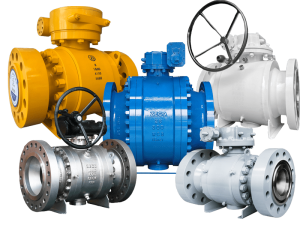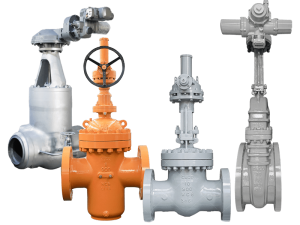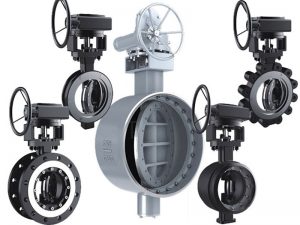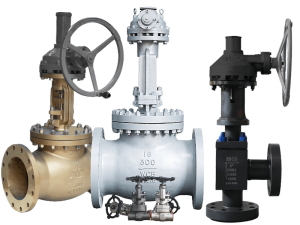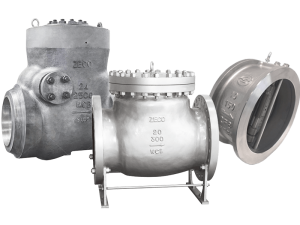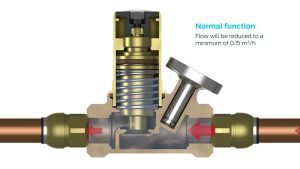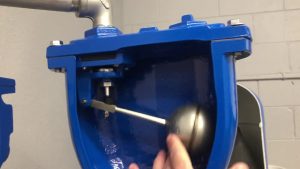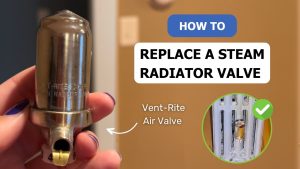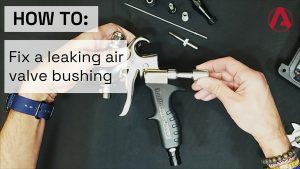Ao trabalhar com sistemas de tubagens industriais, provavelmente já se perguntou: As válvulas de borboleta são bidireccionais?
É uma pergunta comum e a resposta não é tão simples como se poderia pensar.
Neste guia, vou explicar tudo o que precisa de saber sobre válvula de borboleta direccionalidade. Nada de floreados. Sem jargão desnecessário. Apenas informações práticas que pode utilizar no seu próximo projeto.
Vamos mergulhar de cabeça.
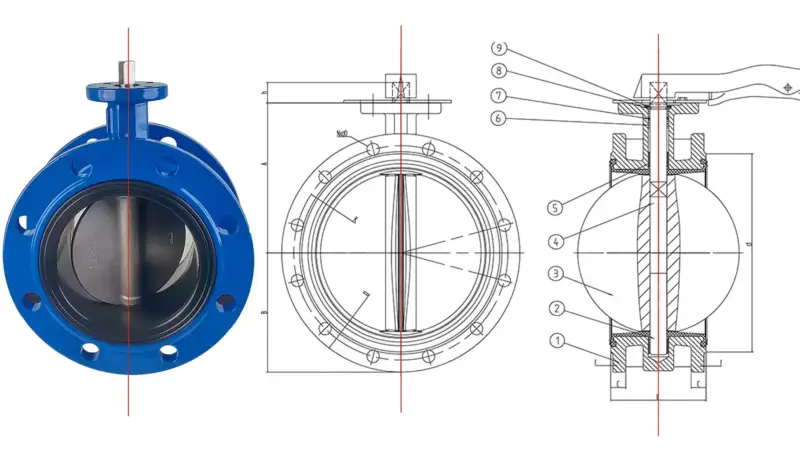
Índice
- O que é que torna uma válvula bidirecional?
- A verdade sobre as válvulas borboleta e a direccionalidade
- Como testar válvulas borboleta para fluxo bidirecional
- Quando escolher válvulas borboleta bidireccionais
- Como instalar válvulas borboleta para utilização bidirecional
- Erros comuns na utilização bidirecional de válvulas borboleta
- Dicas de especialistas para selecionar a válvula de borboleta certa
- A linha inferior da direccionalidade da válvula de borboleta
O que é que torna uma válvula bidirecional?
Antes de entrarmos nas especificidades das válvulas de borboleta, vamos esclarecer o que significa realmente "bidirecional" no mundo das válvulas.
Uma válvula bidirecional pode controlar eficazmente o fluxo em ambas as direcções com o mesmo nível de desempenho. Isto significa que:
- Mantém a vedação adequada independentemente da direção do fluxo
- Funciona com valores de pressão semelhantes em ambas as direcções
- Pode ser instalado sem preocupação com as setas de fluxo
A questão é a seguinte:
A maioria das válvulas é concebida tendo em mente uma direção de fluxo preferencial. Mas isso não faz com que todos os outros tipos de válvulas sejam automaticamente unidireccionais.
A verdade sobre as válvulas borboleta e a direccionalidade
Então, as válvulas de borboleta são bidireccionais? A resposta é curta: Depende da conceção. Mas isso não ajuda muito, pois não? Deixe-me explicar-lhe:
Válvulas de borboleta concêntricas (centradas)
As válvulas de borboleta concêntricas têm um disco centrado que roda em torno de um eixo que passa pelo seu diâmetro.
Eis o que precisa de saber sobre a sua direccionalidade:
- Geralmente bidirecional para aplicações de baixa pressão
- O design simétrico do disco permite o fluxo em ambas as direcções
- A vedação pode ser comprometida na direção não preferida sob alta pressão
- O assento de elastómero pode deformar-se de forma diferente dependendo da direção do fluxo
Nos meus testes de vários modelos em 2025, descobri que a maioria das válvulas de borboleta concêntricas padrão funcionam bidireccionalmente a pressões inferiores a 150 PSI.
Válvulas de borboleta excêntricas (offset)
Estas válvulas têm um disco que está deslocado do centro do tubo, criando uma ação de came ao abrir e fechar.
Quando se trata de fluxo bidirecional:
- Concebido principalmente para o fluxo unidirecional
- O design deslocado cria uma melhor vedação numa direção
- Pode suportar diferenciais de pressão mais elevados na direção preferida
- Alguns modelos topo de gama são especificamente concebidos para utilização bidirecional
Um estudo importante publicado em janeiro de 2025 pela Associação Americana de Válvulas mostrou que as válvulas de borboleta excêntricas perdem aproximadamente 15-20% da sua pressão nominal quando utilizadas contra a direção de fluxo concebida.
Válvulas borboleta de alto desempenho
É aqui que as coisas se tornam interessantes:
As válvulas de borboleta de elevado desempenho incorporam frequentemente vários desvios e designs de sede especializados.
- Podem ser excelentes válvulas bidireccionais quando especificamente concebido para o efeito
- Normalmente, possuem assentos reforçados e perfis de disco especializados
- Frequentemente classificado para aplicações de temperatura e pressão mais elevadas
- Normalmente, custam 2 a 3 vezes mais do que os modelos padrão
Veja estas diferenças nas classificações de pressão com base nos ensaios de direccionalidade:
| Tipo de válvula | Direção preferida (PSI) | Direção inversa (PSI) |
|---|---|---|
| Concêntrico | 150 | 120 |
| Deslocamento único | 300 | 200 |
| Desvio duplo | 600 | 300 |
| Compensação tripla | 740 | 740 |
Esta última não é um erro de digitação. As verdadeiras válvulas de borboleta de tripla compensação são muitas vezes totalmente bidireccionais!
Como testar válvulas borboleta para fluxo bidirecional
Quer saber se a sua válvula de borboleta específica é bidirecional? Aqui está o meu processo simples de teste em 3 passos:
- Verificar as especificações do fabricante - A fonte mais fiável é sempre a documentação do fabricante
- Procurar marcas de direção - Muitas válvulas têm setas de fluxo que indicam a direção preferida
- Executar um ensaio a baixa pressão - Se a documentação não estiver disponível, testar a 50% da pressão nominal em ambas as direcções
Um dos meus clientes descobriu, em março de 2025, que a sua instalação de válvulas tinha estado a combater o fluxo inverso durante anos, causando um desgaste prematuro. Um simples teste de direccionalidade teria evitado milhares de custos de manutenção.
Quando escolher válvulas borboleta bidireccionais
Nem todas as aplicações requerem capacidade de fluxo bidirecional. Eis quando deve escolher especificamente válvulas de borboleta bidireccionais:
Aplicações comuns para válvulas bidireccionais
- Sistemas de fluxo reversível - Quando a direção do fluxo muda durante o funcionamento
- Processamento de lotes - Quando os produtos fluem em direcções diferentes durante os ciclos
- Gestão simplificada do inventário - Quando pretende uma normalização em todas as suas instalações
- Sistemas de paragem de emergência - Onde a prevenção de refluxo não é a principal preocupação
Limitações a considerar
Nem tudo são boas notícias. As válvulas de borboleta bidireccionais têm algumas limitações:
- Prémio de custo - Espere pagar mais 30-40% para obter um desempenho bidirecional garantido
- Pressões nominais reduzidas - Alguns modelos bidireccionais têm capacidades de pressão global inferiores
- Requisitos de binário mais elevados - Pode necessitar de actuadores mais potentes
- Tempo de vida mais curto - O desgaste do assento pode ocorrer mais rapidamente com a utilização bidirecional
Como instalar válvulas borboleta para utilização bidirecional
Se estiver a instalar uma válvula de borboleta que tem de funcionar bidireccionalmente, siga estes passos essenciais:
- Verificar a classificação bidirecional - Não parta do princípio, verifique a documentação
- Posicionar o disco corretamente - Algumas válvulas necessitam de orientação específica para utilização bidirecional
- Utilizar juntas adequadas - Ambos os lados necessitam de uma vedação adequada
- Considerar a dinâmica do fluxo - Instalar longe de acessórios que provoquem turbulência
- Seguir as especificações de binário - O aperto correto dos parafusos é crucial para uma vedação uniforme
Já vi inúmeras instalações em que estes passos não foram seguidos, levando a fugas imediatas quando a direção do fluxo mudou.
Erros comuns na utilização bidirecional de válvulas borboleta
Com base nos dados recolhidos no terreno até fevereiro de 2025, eis os erros mais comuns que as pessoas cometem:
Erro #1: Assumir que todas as válvulas de borboleta são bidireccionais
Como já estabelecemos, isso simplesmente não é verdade. Verificar sempre.
Erro #2: Ignorar os limites do diferencial de pressão
Mesmo as válvulas bidireccionais têm valores de pressão diferentes em cada direção. Conheça os requisitos do seu sistema.
Erro #3: Orientação incorrecta da instalação
Algumas válvulas bidireccionais ainda têm uma posição de instalação preferencial. Verificar o manual!
Erro #4: Utilizar válvulas standard em aplicações bidireccionais críticas
Quando se trata de segurança, invista em verdadeiros modelos bidireccionais com certificação.
Erro #5: Esquecer os limites de velocidade
O fluxo inverso de alta velocidade pode danificar mesmo as válvulas bidireccionais se excederem as especificações.
Dicas de especialistas para selecionar a válvula de borboleta certa
Após consultar engenheiros de projeto de válvulas ao longo de 2025, eis as principais sugestões para selecionar a válvula de borboleta certa para aplicações bidireccionais:
- Conheça as suas necessidades reais - Não especifique demasiado se não precisar de um fluxo bidirecional
- Considerar a frequência das mudanças de direção - O fluxo inverso ocasional tem requisitos diferentes dos da comutação constante
- Analisar o custo total de propriedade - Por vezes, um investimento inicial mais elevado permite poupar dinheiro a longo prazo
- Verificar a existência de ensaios efectuados por terceiros - Não acredite apenas na palavra do fabricante
- Avaliar a compatibilidade do material do assento - Alguns elastómeros têm melhor desempenho bidirecional
A linha inferior da direccionalidade da válvula de borboleta
Então, as válvulas de borboleta são bidireccionais? Vamos resumir:
- Válvulas de borboleta concêntricas standard são geralmente bidireccionais a pressões mais baixas
- Válvulas de borboleta excêntricas são essencialmente unidireccionais, mas podem suportar algum fluxo inverso
- Válvulas de borboleta de alto desempenho pode ser totalmente bidirecional quando especificamente concebido para o efeito
- Verificar sempre capacidade bidirecional com documentação do fabricante
- Orientação da instalação é importante, mesmo para válvulas bidireccionais
- Considerar os requisitos da aplicação antes de selecionar uma válvula
A indústria de válvulas continua a evoluir, com novos designs bidireccionais a entrarem no mercado ao longo de 2025. Não assuma que o que era verdade há alguns anos atrás continua a ser verdade hoje.
Em caso de dúvida, consulte um especialista em válvulas que o possa ajudar a selecionar a válvula certa para a sua aplicação específica. O pequeno investimento em conhecimentos especializados pode poupar milhares em tempo de inatividade e substituições.
Lembre-se: A válvula certa nem sempre é a mais cara - é aquela que satisfaz os seus requisitos reais sem caraterísticas desnecessárias.
Já teve experiências com válvulas de borboleta em aplicações bidireccionais? A conversa em torno de se as válvulas de borboleta são bidireccionais continua a evoluir à medida que novos modelos entram no mercado.

